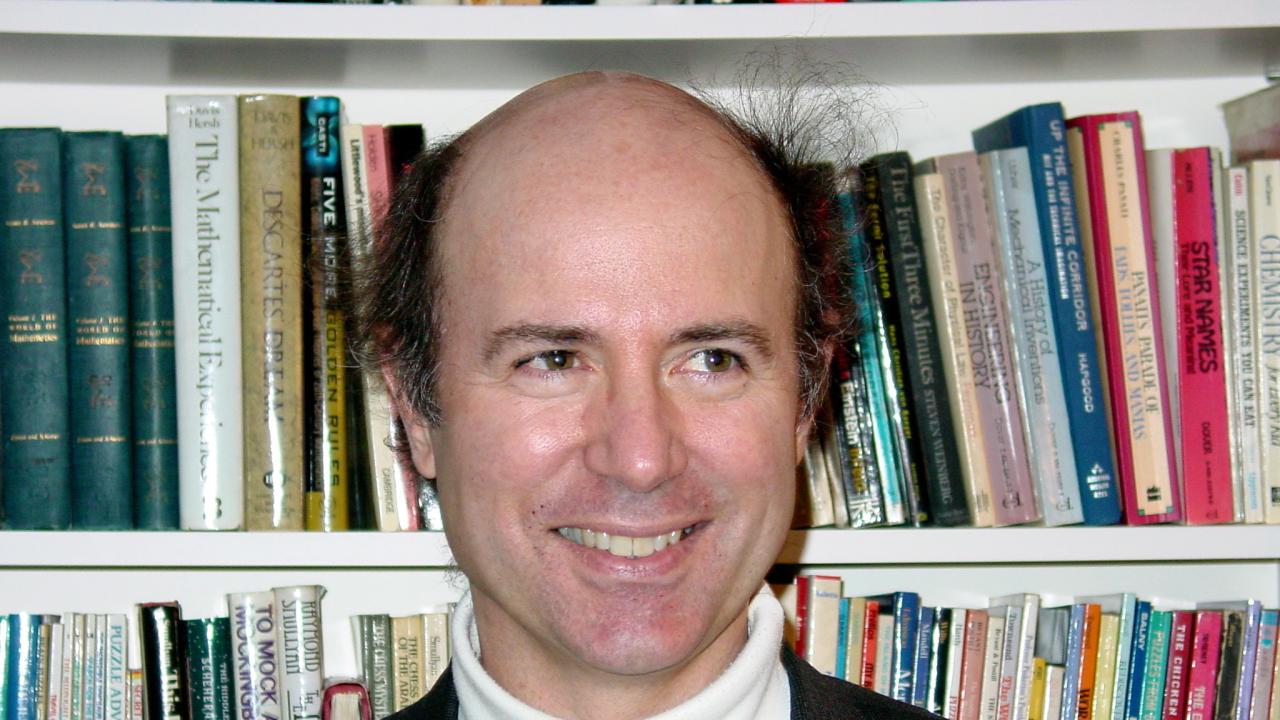
Not all physicists, especially ones as distinguished as Frank Wilczek, take the time to write for the general public. While in non-pandemic times he travels extensively due to his four professorships (at the Massachusetts Institute of Technology, Arizona State University, Shanghai Jiao Tong University, and Stockholm University) and his many collaborations on the frontiers of theoretical physics, Wilczek doesn't want to talk only with other scientists. The scientist with the creative and deep-thinking mind behind ground-breaking work in asymptotic freedom, axions, anyons, and time crystals has just released his fifth book for non-physicists, titled Fundamentals: Ten Keys to Reality.
"I was really trying to think about my friends who are not physicists, and my own self as a teenager. I think our community of physicists has come to a much deeper understanding of what physical reality is over the course of my career. Not everybody knows about it, and people could really enjoy it and have their minds expanded by it," says Wilczek. "I think that's part of my job, not only to improve our understanding of our physical world but also to share that knowledge."
Wilczek, who is giving an ICTP Online Colloquium on March 8 at 14:00 CET, joins a long history of famous scientists in conversation with both physicists and non-physicists: "Feynman worked very hard to convey science to the public," says Wilczek, enumerating some of his role models: "Einstein wrote several attempts at popularization, Maxwell actually taught night classes essentially, and Faraday — there was a whole culture of this, a serious movement to educate working people who were interested," says Wilczek. "I don't think science should be a detached part of culture, it should be part of the whole and accessible to everyone."
His upcoming Colloquium at ICTP will cover the past, present, and future of research on time crystals, diving into some of his recent work on improving the understanding of the physical world. Wilczek is most famous for his work on asymptotic freedom, the discovery that quarks, the building blocks of atoms, are more attracted to each other the further apart they are, and behave as free particles when they are close together. This work, done in 1973 and for which he won the Nobel Prize with David Gross in 2004, is a key part of quantum field theory and helps explain how quarks interact and form protons and neutrons.
More recently, Wilczek proposed the existence of time crystals in 2012. Not a concept from science fiction, it is the idea of a crystal with a structure that repeats not only in space, as common crystals do. Despite the laws of physics being spatially symmetrical, crystal structures are not completely symmetrical — they have instances of broken symmetry. Those laws are also symmetrical in time, so Wilczek proposed the idea of a crystal with a form that breaks symmetry temporally as well as spatially. Wilczek's Colloquium at ICTP is being held in the context of a workshop focusing on research in time crystals, one several fields of research Wilczek's work has inspired.
Wilczek's work is wide ranging, touching questions from particle physics to condensed matter physics, but he wasn't always planning on being a physicist. "When I was in college I originally intended to study neurobiology, to understand how mind emerges from matter," Wilczek remembers. "I still think that's the greatest problem in front of us." The tools developed since then make the problem much more ripe for investigation, thanks to artificial intelligence advancing rapidly and more types of minds to study, including quantum minds, Wilczek says. "Maybe if I were starting my career today I might focus on some version of that question, but I would be bringing the same style of thought and I would hope even a lot of the same background as I got from physics," says Wilczek. "Physics has a marvelous set of tools for understanding questions like that."
"I certainly wouldn't discourage anybody from going into physics," he laughs. "The only thing I would warn about it is that while early in the 20th century, the search for fundamental new laws and the search for new ways of implementing technology were the same thing, or at least had significant impact on each other, now it's much, much less so." But while the nature of the connection between science and technology may have evolved, he says, "there are certainly beautiful growth areas in physics about the nature of knowledge as it's modified by quantum theory, around quantum information. And there's wonderful opportunities for technology there."
Ask Wilczek what research he is particularly excited about these days, and he starts to talk about the detection of axions, the proposed elementary particle making up the mysterious dark matter that makes up 30% of the universe. "If I had to pin down one thing, I'm most excited to be working on the possibility of detecting axions as dark matter," he says. "This is very special time in axion physics, technology is finally emerging to really engage with the possibility axions are the dark matter and we can detect it."
Luckily, the process of science as well as the research itself benefits from technology development: "In the last twenty years the huge change is now we can talk across continents, online, not only talk but see faces and gestures. This makes the possibilities for international collaborations much easier." With ICTP's mission of connecting and supporting science globally, Wilczek's prediction that soon people could become scientists based on "talents and predilections, not on the vagaries of time and space that give people particular opportunities and limitations."
"In the long term, if we don't go off the deep end and allow nationalism to get in the way, I think we could have a very bright future with very few barriers to people entering the scientific community." That's a future worth building towards.
---- Kelsey Calhoun
















